Java的业务逻辑验证框架fluent-validator
- 2月 8, 2016
1 背景
在互联网行业中,基于Java开发的业务类系统,不管是服务端还是客户端,业务逻辑代码的更新往往是非常频繁的,这源于功能的快速迭代特性。在一般公司内部,特别是使用Java web技术构建的平台中,不管是基于模块化还是服务化的,业务逻辑都会相对复杂。
这些系统之间、系统内部往往存在大量的API接口,这些接口一般都需要对入参(输入参数的简称)做校验,以保证:
1) 核心业务逻辑能够顺利按照预期执行。
2) 数据能够正常存取。
3) 数据安全性。包括符合约束以及限制,有访问权限控制以及不出现SQL注入等问题。
开发人员在维护核心业务逻辑的同时,还需要为输入做严格的校验。当输入不合法时,能够给caller一个明确的反馈,最常见的反馈就是返回封装了result的对象或者抛出exception。
一些常见的验证代码片段如下所示:
public Response execute(Request request) {if (request \== null) {throw BizException();}List cars \= request.getCars();if (CollectionUtils.isEmpty(cars)) {throw BizException();}for (Car car : cars) {if (car.getSeatCount() < 2) {throw BizException(); }}// do core business logic
}
public Response execute(Request request) {if (request == null) { throw BizException(); }List cars = request.getCars(); if (CollectionUtils.isEmpty(cars)) { throw BizException(); }for (Car car : cars) {if (car.getSeatCount() < 2) { throw BizException(); } } // do core business logic }我们不能说这是反模式(anti-pattern),但是从中我们可以发现,它不够优雅而且违反一些范式:
1)违反单一职责原则(Single responsibility)。核心业务逻辑(core business logic)和验证逻辑(validation logic)耦合在一个类中。
2)开闭原则(Open/closed)。我们应该对扩展开放,对修改封闭,验证逻辑不好扩展,而且一旦需要修改需要动整体这个类。
3)DRY原则(Don’t repeat yourself)。代码冗余,相同逻辑可能散落多处,长此以往不好收殓。
2 为何要使用FluentValidator
原因很简单,第一为了优雅,出色的程序员都有点洁癖,都希望让验证看起来很舒服;第二,为了尽最大可能符合这些优秀的原则,做clean code。
FluentValidator就是这么一个工具类库,适用于以Java语言开发的程序,让开发人员回归focus到业务逻辑上,使用流式(Fluent Interface)调用风格让验证跑起来很优雅,同时验证器(Validator)可以做到开闭原则,实现最大程度的复用。
3 FluentValidator特点
这里算是Quick learn了解下,也当且看做打广告吧,看了这些特点,希望能给你往下继续阅读的兴趣:)
-
验证逻辑与业务逻辑不再耦合
摒弃原来不规范的验证逻辑散落的现象。 -
校验器各司其职,好维护,可复用,可扩展
一个校验器(Validator)只负责某个属性或者对象的校验,可以做到职责单一,易于维护,并且可复用。 -
流式风格(Fluent Interface)调用
借助Martin大神提倡的流式API风格,使用“惰性求值(Lazy evaluation)”式的链式调用,类似guava、Java8 stream API的使用体验。 -
使用注解方式验证
可以装饰在属性上,减少硬编码量。 -
支持JSR 303 – Bean Validation标准
或许你已经使用了Hibernate Validator,不用抛弃它,FluentValidator可以站在巨人的肩膀上。 -
Spring良好集成
校验器可以由Spring IoC容器托管。校验入参可以直接使用注解,配置好拦截器,核心业务逻辑完全没有验证逻辑的影子,干净利落。 -
回调给予你充分的自由度
验证过程中发生的错误、异常,验证结果的返回,开发人员都可以定制。
4 哪里可以获取到FluentValidator
项目托管在github上,地址点此https://github.com/neoremind/fluent-validator。说明文档全英完成,i18n化,同时使用Apache2 License开源。

最新发布的Jar包可以在maven中央仓库找到,地址点此。
5 上手
5.1 maven引入依赖
添加如下依赖到maven的pom.xml文件中:
<dependency><groupId>com.baidu.unbiz</groupId><artifactId>fluent-validator</artifactId><version>1.0.5</version>
</dependency>
<dependency> <groupId>com.baidu.unbiz</groupId><artifactId>fluent-validator</artifactId> <version>1.0.5</version>
</dependency>
注:最新release请及时参考github。
上面这个FluentValidator是个基础核心包,只依赖于slf4j和log4j,如果你使用logback,想去掉log4j,排除掉的方法如下所示:
<dependency><groupId>com.baidu.unbiz</groupId><artifactId>fluent-validator</artifactId><exclusions><exclusion><groupId>org.slf4j</groupId\><artifactId>slf4j-log4j12</artifactId></exclusion></exclusions>
</dependency>
<dependency>
<groupId>com.baidu.unbiz</groupId>
<artifactId>fluent-validator</artifactId>
<exclusions> <exclusion> <groupId>org.slf4j</groupId><artifactId>slf4j-log4j12</artifactId></exclusion>
</exclusions>
</dependency>
5.2 开发业务领域模型
从广义角度来说DTO(Data Transfer Object)、VO(Value Object)、BO(Business Object)、POJO等都可以看做是业务表达模型。
我们这里创建一个汽车类(Car)的POJO,里面定义了牌照(license plate)、座椅数(seat count)、生产商(manufacturer)。
public class Car {private String manufacturer;private String licensePlate;private int seatCount;// getter and setter...
}
public class Car { private String manufacturer; private String licensePlate; private int seatCount; // getter and setter...
}
5.3 开发一个专职的Validator
实际这里需要开发三个Validator,分别对Car的3个属性进行校验,这里以座椅数为例展示如何开发一个Validator,其他两个省略。
import com.baidu.unbiz.fluentvalidator.ValidatorContext;
import com.baidu.unbiz.fluentvalidator.ValidatorHandler;public class CarSeatCountValidator extends ValidatorHandler<Integer\>implements Validator<Integer\>{@Override
public boolean validate(ValidatorContext context,Integer t){if(t< 2){context.addErrorMsg(String.format("Seat count is not valid, invalid value=%s",t));return false;}return true;}}public class CarSeatCountValidator extends ValidatorHandler<Integer> implements Validator<Integer> {@Overridepublic boolean validate(ValidatorContext context, Integer t) {if (t < 2) {context.addErrorMsg(String.format("Seat count is not valid, invalid value=%s", t));return false;}return true;}
}
很简单,实现Validator接口,泛型T规范这个校验器待验证的对象的类型,继承ValidatorHandler可以避免实现一些默认的方法,例如accept(),后面会提到,validate()方法第一个参数是整个校验过程的上下文,第二个参数是待验证对象,也就是座椅数。
验证逻辑很简单,座椅数必须大于1,否则通过context放入错误消息并且返回false,成功返回true。
5.4 开始验证吧
二话不说,直接上代码:
Car car = getCar();Result ret = FluentValidator.checkAll().on(car.getLicensePlate(), new CarLicensePlateValidator()).on(car.getManufacturer(), new CarManufacturerValidator()).on(car.getSeatCount(), new CarSeatCountValidator()).doValidate().result(toSimple());System.out.println(ret);Car car = getCar(); Result ret = FluentValidator.checkAll() .on(car.getLicensePlate(), new CarLicensePlateValidator()) .on(car.getManufacturer(), new CarManufacturerValidator()) .on(car.getSeatCount(), new CarSeatCountValidator()) .doValidate() .result(toSimple()); System.out.println(ret);
我想不用多说,如果你会英文,你就能知道这段代码是如何工作的。这就是流式风格(Fluent Interface)调用的优雅之处,让代码更可读、更好理解。
还是稍微说明下,首先我们通过FluentValidator.checkAll()获取了一个FluentValidator实例,紧接着调用了failFast()表示有错了立即返回,它的反义词是failOver,然后,一连串on()操作表示在Car的3个属性上依次使用3个校验器进行校验(这个过程叫做applying constraints),截止到此,真正的校验还并没有做,这就是所谓的“惰性求值(Lazy valuation)”,有点像Java8 Stream API中的filter()、map()方法,直到doValidate()验证才真正执行了,最后我们需要收殓出来一个结果供caller获取打印,直接使用默认提供的静态方法toSimple()来做一个回调函数传入result()方法,最终返回Result类,如果座椅数不合法,那么控制台打印结果如下:
Result{isSuccess=false, errors=[Seat count is not valid, invalid value=99]}
Result{isSuccess=false, errors=[Seat count is not valid, invalid value=99]}
6 深入实践
6.1 Validator详解
Validator接口定义如下:
public interface Validator<T\>{/\*\*\*判断在该对象上是否接受或者需要验证\*<p/>\*如果返回true,那么则调用{@link #validate(ValidatorContext,Object)},否则跳过该验证器\*\*@param context 验证上下文\*@param t 待验证对象\*\*@return 是否接受验证\*/boolean accept(ValidatorContext context,T t);/\*\*\*执行验证\*<p/>\*如果发生错误内部需要调用{@link ValidatorContext#addErrorMsg(String)}方法,也即<code>context.addErrorMsg(String)\*</code>来添加错误,该错误会被添加到结果存根{@link Result}的错误消息列表中。\*\*@param context 验证上下文\*@param t 待验证对象\*\*@return 是否验证通过\*/boolean validate(ValidatorContext context,T t);/\*\*\*异常回调\*<p/>\*当执行{@link #accept(ValidatorContext,Object)}或者{@link #validate(ValidatorContext,Object)}发生异常时的如何处理\*\*@param e 异常\*@param context 验证上下文\*@param t 待验证对象\*/void onException(Exception e,ValidatorContext context,T t);}public interface Validator<T> { /\*\* \*判断在该对象上是否接受或者需要验证 \* <p/> \*如果返回true,那么则调用 {@link #validate(ValidatorContext, Object)},否则跳过该验证器 \* \*@paramcontext 验证上下文 \*@paramt 待验证对象 \* \*@return 是否接受验证 \*/boolean accept(ValidatorContext context, T t); /\*\* \*执行验证 \* <p/> \*如果发生错误内部需要调用 {@link ValidatorContext#addErrorMsg(String)}方法,也即<code> context.addErrorMsg(String) \* </code>来添加错误,该错误会被添加到结果存根 {@link Result}的错误消息列表中。 \* \*@paramcontext 验证上下文 \*@paramt 待验证对象 \* \*@return 是否验证通过 \*/boolean validate(ValidatorContext context, T t); /\*\* \*异常回调 \* <p/> \*当执行 {@link #accept(ValidatorContext, Object)}或者 {@link #validate(ValidatorContext, Object)}发生异常时的如何处理 \* \*@parame 异常 \*@paramcontext 验证上下文 \*@paramt 待验证对象 \*/void onException(Exception e, ValidatorContext context, T t);
}ValidatorHandler是实现Validator接口的一个模板类,如果你自己实现的Validator不想覆盖上面3个方法,可以继承这个ValidatorHandler。public class ValidatorHandler<T\>implements Validator<T\>{@Override
public boolean accept(ValidatorContext context,T t){return true;}@Override
public boolean validate(ValidatorContext context,T t){return true;}@Override
public void onException(Exception e,ValidatorContext context,T t){}}public class ValidatorHandler<T> implements Validator<T> {@Overridepublic boolean accept(ValidatorContext context, T t) {return true;}@Overridepublic boolean validate(ValidatorContext context, T t) {return true;}@Overridepublic void onException(Exception e, ValidatorContext context, T t) {}
}
内部校验逻辑发生错误时候,有两个处理办法,
第一,简单处理,直接放入错误消息。
context.addErrorMsg(“Something is wrong about the car seat count!”);
return false;
context.addErrorMsg(“Something is wrong about the car seat count!”); return false;
第二,需要详细的信息,包括错误消息,错误属性/字段,错误值,错误码,都可以自己定义,放入错误的方法如下,create()方法传入消息(必填),setErrorCode()方法设置错误码(选填),setField()设置错误字段(选填),setInvalidValue()设置错误值(选填)。当然这些信息需要result(toComplex())才可以获取到,详见6.7小节。
context.addError(ValidationError.create(“Something is wrong about the car seat count!”).setErrorCode(100).setField(“seatCount”).setInvalidValue(t));
return false;
context.addError(ValidationError.create(“Something is wrong about the car seat count!”).setErrorCode(100).setField(“seatCount”).setInvalidValue(t)); return false;
6.2 ValidatorChain
on()的一连串调用实际就是构建调用链,因此理所当然可以传入一个调用链。
ValidatorChain chain=new ValidatorChain();List<Validator>validators=new ArrayList<Validator>();validators.add(new CarValidator());chain.setValidators(validators);Result ret=FluentValidator.checkAll().on(car,chain).doValidate().result(toSimple());ValidatorChain chain=new ValidatorChain();List<Validator> validators=new ArrayList<Validator>();validators.add(new CarValidator());chain.setValidators(validators);Result ret=FluentValidator.checkAll().on(car,chain).doValidate().result(toSimple());
6.3 onEach
如果要验证的是一个集合(Collection)或者数组,那么可以使用onEach,FluentValidator会自动为你遍历,依次apply constraints。
FluentValidator.checkAll().onEach(Lists.newArrayList(new Car(), new Car()), new CarValidator());
FluentValidator.checkAll().onEach(new Car[]{}, new CarValidator());FluentValidator.checkAll() .onEach(Lists.newArrayList(new Car(), new Car()), new CarValidator()); FluentValidator.checkAll() .onEach(new Car[]{}, new CarValidator());
6.4 fail fast or fail over
当出现校验失败时,也就是Validator的validate()方法返回了false,那么是继续还是直接退出呢?默认为使用failFast()方法,直接退出,如果你想继续完成所有校验,使用failOver()来skip掉。
FluentValidator.checkAll().failFast().on(car.getManufacturer(), new CarManufacturerValidator());
FluentValidator.checkAll().failOver().on(car.getManufacturer(), new CarManufacturerValidator());FluentValidator.checkAll().failFast() .on(car.getManufacturer(), new CarManufacturerValidator()); FluentValidator.checkAll().failOver() .on(car.getManufacturer(), new CarManufacturerValidator());
6.5 when
on()后面可以紧跟一个when(),当when满足expression表达式on才启用验证,否则skip调用。
FluentValidator.checkAll().on(car.getManufacturer(), new CarManufacturerValidator()).when(a \== b)FluentValidator.checkAll() .on(car.getManufacturer(), new CarManufacturerValidator()).when(a == b)
6.6 验证回调callback
doValidate()方法接受一个ValidateCallback接口,接口定义如下:
public interface ValidateCallback {/** 所有验证完成并且成功后** @param validatorElementList 验证器list*/void onSuccess(ValidatorElementList validatorElementList);/** 所有验证步骤结束,发现验证存在失败后** @param validatorElementList 验证器list* @param errors 验证过程中发生的错误*/void onFail(ValidatorElementList validatorElementList, List<ValidationError\> errors);/*\* 执行验证过程中发生了异常后\*\* @param validator 验证器\* @param e 异常\* @param target 正在验证的对象\*\* @throws Exception\*/void onUncaughtException(Validator validator, Exception e, Object target) throws Exception;}public interface ValidateCallback { /*所有验证完成并且成功后 */@paramvalidatorElementList /*验证器list \*/void onSuccess(ValidatorElementList validatorElementList); /*/\*\* \*所有验证步骤结束,发现验证存在失败后 */ @paramvalidatorElementList /*验证器list */@paramerrors/* 验证过程中发生的错误 \*/void onFail(ValidatorElementList validatorElementList, List<ValidationError> errors); /*\*\* \*执行验证过程中发生了异常后 \* */@paramvalidator /* 验证器 \*/@parame /*异常\*/@paramtarget /* 正在验证的对象 \* \*@throws Exception \*/void onUncaughtException(Validator validator, Exception e, Object target) throws Exception;
}
默认的,使用不含参数的doValidate()方法,FluentValidator使用DefaultValidateCallback,其实现如下,可以看出出错了,成功了什么也不做,有不可控异常的时候直接抛出。
public class DefaultValidateCallback implements ValidateCallback {@Overridepublic void onSuccess(ValidatorElementList validatorElementList) {}@Overridepublic void onFail(ValidatorElementList validatorElementList, List<ValidationError\> errors) {}@Overridepublic void onUncaughtException(Validator validator, Exception e, Object target) throws Exception {throw e;}
}
public class DefaultValidateCallback implements ValidateCallback {@Overridepublic void onSuccess(ValidatorElementList validatorElementList) {}@Overridepublic void onFail(ValidatorElementList validatorElementList, List<ValidationError> errors) {}@Overridepublic void onUncaughtException(Validator validator, Exception e, Object target) throws Exception {throw e;}
}
如果你不满意这种方式,例如成功的时候打印一些消息,一种实现方式如下:
Result ret = FluentValidator.checkAll().on(car.getSeatCount(), new CarSeatCountValidator()).doValidate(new DefaulValidateCallback() {@Overridepublic void onSuccess(ValidatorElementList validatorElementList) {LOG.info("all ok!");}}).result(toSimple());Result ret = FluentValidator.checkAll()
.on(car.getSeatCount(), new CarSeatCountValidator())
.doValidate(new DefaulValidateCallback() { @Override public void onSuccess(ValidatorElementList validatorElementList) { LOG.info("all ok!"); } })
.result(toSimple());
6.7 获取结果
result()接受一个ResultCollector接口,如上面所示,toSimple()实际是个静态方法,这种方式在Java8 Stream API中很常见,默认可以使用FluentValidator自带的简单结果Result,如果需要可以使用复杂ComplexResult,内含错误消息,错误属性/字段,错误值,错误码,如下所示:
ComplexResult ret = FluentValidator.checkAll().failOver().on(company, new CompanyCustomValidator()).doValidate().result(toComplex());ComplexResult ret = FluentValidator.checkAll().failOver() .on(company, new CompanyCustomValidator()) .doValidate().result(toComplex());
当然,如果你想自己实现一个结果类型,完全可以定制,实现ResultCollector接口即可。
public interface ResultCollector<T> {/*\*\* 转换为对外结果\*\* @param result 框架内部验证结果\*\* @return 对外验证结果对象\*/T toResult(ValidationResult result);
}public interface ResultCollector<T> { /\*\* \* 转换为对外结果 \* \* @param result 框架内部验证结果 \* \* @return 对外验证结果对象 \*/ T toResult(ValidationResult result); }toSimple() 和 toComplex()方法是通过如下方式static import进来的:import static com.baidu.unbiz.fluentvalidator.ResultCollectors.toSimple;import static com.baidu.unbiz.fluentvalidator.ResultCollectors. toComplex;
6.8 关于RuntimeValidateException
如果验证中发生了一些不可控异常,例如数据库调用失败,RPC连接失效等,会抛出一些异常,如果Validator没有try-catch处理,FluentValidator会将这些异常封装在RuntimeValidateException,然后再re-throw出去,这个情况你应该知晓并作出你认为最正确的处理。
6.9 context上下文共享
通过putAttribute2Context()方法,可以往FluentValidator注入一些键值对,在所有Validator中共享,有时候这相当有用。
例如下面展示了在caller添加一个ignoreManufacturer属性,然后再Validator中拿到这个值的过程。
FluentValidator.checkAll().putAttribute2Context("ignoreManufacturer", true).on(car.getManufacturer(), new CarManufacturerValidator()).doValidate().result(toSimple());public class CarManufacturerValidator extends ValidatorHandler<String\> implements Validator<String\> {@Overridepublic boolean validate(ValidatorContext context, String t) {Boolean ignoreManufacturer \= context.getAttribute("ignoreManufacturer", Boolean.class);if (ignoreManufacturer != null && ignoreManufacturer) {return true;}// ...}}
FluentValidator.checkAll().putAttribute2Context("ignoreManufacturer", true).on(car.getManufacturer(), new CarManufacturerValidator()).doValidate().result(toSimple());public class CarManufacturerValidator extends ValidatorHandler<String> implements Validator<String> {@Overridepublic boolean validate(ValidatorContext context, String t) {Boolean ignoreManufacturer = context.getAttribute("ignoreManufacturer", Boolean.class);if (ignoreManufacturer != null && ignoreManufacturer) {return true;} //... } }
6.10 闭包
通过putClosure2Context()方法,可以往FluentValidator注入一个闭包,这个闭包的作用是在Validator内部可以调用,并且缓存结果到Closure中,这样caller在上层可以获取这个结果。
典型的应用场景是,当需要频繁调用一个RPC的时候,往往该执行线程内部一次调用就够了,多次调用会影响性能,我们就可以缓存住这个结果,在所有Validator间和caller中共享。
下面展示了在caller处存在一个manufacturerService,它假如需要RPC才能获取所有生产商,显然是很耗时的,可以在validator中调用,然后validator内部共享的同时,caller可以利用闭包拿到结果,用于后续的业务逻辑。
Closure<List<String>> closure \= new ClosureHandler<List<String\>>() {private List<String\> allManufacturers;@Overridepublic List<String\> getResult() {return allManufacturers;}@Overridepublic void doExecute(Object... input) {allManufacturers \= manufacturerService.getAllManufacturers();}
};Result ret \= FluentValidator.checkAll().putClosure2Context("manufacturerClosure", closure).on(car, validator).doValidate().result(toSimple());public class CarValidator extends ValidatorHandler<Car\> implements Validator<Car\> {@Overridepublic boolean validate(ValidatorContext context, Car car) {Closure<List<String\>> closure \= context.getClosure("manufacturerClosure");List<String\> manufacturers \= closure.executeAndGetResult();if (!manufacturers.contains(car.getManufacturer())) {context.addErrorMsg(String.format(CarError.MANUFACTURER\_ERROR.msg(), car.getManufacturer()));return false;}return true;}
}Closure<List<String>> closure = new ClosureHandler<List<String>>() {private List<String> allManufacturers;@Overridepublic List<String> getResult() {return allManufacturers;}@Overridepublic void doExecute(Object... input) {allManufacturers = manufacturerService.getAllManufacturers();}};Result ret = FluentValidator.checkAll().putClosure2Context("manufacturerClosure", closure).on(car, validator).doValidate().result(toSimple());public class CarValidator extends ValidatorHandler<Car> implements Validator<Car> {@Overridepublic boolean validate(ValidatorContext context, Car car) {Closure<List<String>> closure = context.getClosure("manufacturerClosure");List<String> manufacturers = closure.executeAndGetResult();if (!manufacturers.contains(car.getManufacturer())) {context.addErrorMsg(String.format(CarError.MANUFACTURER\_ERROR.msg(), car.getManufacturer()));return false;} return true;}}
7 高级玩法
7.1 与JSR303规范最佳实现Hibernate Validator集成
Hibernate Validator是JSR 303 – Bean Validation规范的一个最佳的实现类库,他仅仅是jboss家族的一员,和大名鼎鼎的Hibernate ORM是系出同门,属于远房亲戚关系。很多框架都会天然集成这个优秀类库,例如Spring MVC的@Valid注解可以为Controller方法上的参数做校验。
FluentValidator当然不会重复早轮子,这么好的类库,一定要使用站在巨人肩膀上的策略,将它集成进来。
想要了解更多Hibernate Validator用法,参考这个链接。
下面的例子展示了@NotEmpty, @Pattern, @NotNull, @Size, @Length和@Valid这些注解装饰一个公司类(Company)以及其成员变量(Department)。
public class Company {@NotEmpty@Pattern(regexp \= "\[0-9a-zA-Z\\4e00-\\u9fa5\]+")private String name;@NotNull(message \= "The establishTime must not be null")private Date establishTime;@NotNull@Size(min \= 0, max \= 10)@Validprivate List<Department\> departmentList;// getter and setter...
}public class Department {@NotNullprivate Integer id;@Length(max \= 30)private String name;// getter and setter...
}
public class Company {@NotEmpty@Pattern(regexp = "\[0-9a-zA-Z\\4e00-\\u9fa5\]+")private String name;@NotNull(message = "The establishTime must not be null")private Date establishTime;@NotNull@Size(min = 0, max = 10)@Validprivate List<Department> departmentList; // getter and setter...}public class Department {@NotNullprivate Integer id;@Length(max = 30)private String name; // getter and setter...}
我们要在这个Company类上做校验,首先引入如下的jar包到pom.xml中。
<dependency><groupId>com.baidu.unbiz</groupId><artifactId>fluent-validator-jsr303</artifactId><version>1.0.5</version>
</dependency><dependency> <groupId>com.baidu.unbiz</groupId><artifactId>fluent-validator-jsr303</artifactId> <version>1.0.5</version> </dependency>
默认依赖于Hibernate Validator 5.2.1.Final版本。
然后我们使用HibernateSupportedValidator这个验证器来在company上做校验,它和普通的Validator没任何区别。
Result ret \= FluentValidator.checkAll().on(company, new HibernateSupportedValidator<Company\>().setValidator(validator)).on(company, new CompanyCustomValidator()).doValidate().result(toSimple());
System.out.println(ret);Result ret = FluentValidator.checkAll() .on(company, new HibernateSupportedValidator<Company>().setValidator(validator)) .on(company, new CompanyCustomValidator()) .doValidate().result(toSimple()); System.out.println(ret);
注意这里的HibernateSupportedValidator依赖于javax.validation.Validator的实现,也就是Hibernate Validator,否则它将不会正常工作。
下面是Hibernate Validator官方提供的初始化javax.validation.Validator实现的方法,供参考使用。
Locale.setDefault(Locale.ENGLISH); // speicify language
ValidatorFactory factory = Validation.buildDefaultValidatorFactory();
javax.validation.Validator validator = factory.getValidator();
Locale.setDefault(Locale.ENGLISH); // speicify language ValidatorFactory factory = Validation.buildDefaultValidatorFactory(); javax.validation.Validator validator = factory.getValidator();
7.2 注解验证
一直以来介绍的方式都是通过显示的API调用来进行验证,FluentValidator同样提供简洁的基于注解配置的方式来达到同样的效果。
@FluentValidate可以装饰在属性上,内部接收一个Class[]数组参数,这些个classes必须是Validator的子类,这叫表明在某个属性上依次用这些Validator做验证。举例如下,我们改造下Car这个类:
public class Car {@FluentValidate({CarManufacturerValidator.class})private String manufacturer;@FluentValidate({CarLicensePlateValidator.class})private String licensePlate;@FluentValidate({CarSeatCountValidator.class})private int seatCount;// getter and setter ...
}
然后还是利用on()或者onEach()方法来校验,这里只不过不用传入Validator或者ValidatorChain了。
Car car \= getCar();Result ret \= FluentValidator.checkAll().configure(new SimpleRegistry()).on(car).doValidate().result(toSimple());Car car = getCar(); Result ret = FluentValidator.checkAll().configure(new SimpleRegistry()) .on(car) .doValidate() .result(toSimple());
那么问题来了?不要问我挖掘机(Validator)哪家强,先来说挖掘(Validator)从哪来。
默认的,FluentValidator使用SimpleRegistry,它会尝试从当前的class loader中调用Class.newInstance()方法来新建一个Validator,具体使用示例如下,默认的你不需要使用configure(new SimpleRegistry())。
一般情况下,SimpleRegistry都够用了。除非你的验证器需要Spring IoC容器管理的bean注入,那么你干脆可以把Validator也用Spring托管,使用@Service或者@Component注解在Validator类上就可以做到,如下所示:
@Component
public class CarSeatCountValidator extends ValidatorHandler<Integer> implements Validator<Integer> {// ...
}@Component public class CarSeatCountValidator extends ValidatorHandler<Integer> implements Validator<Integer> {
// ...
}
这时候,需要使用SpringApplicationContextRegistry,它的作用就是去Spring的容器中寻找Validator。想要使用Spring增强功能,将下面的maven依赖加入到pom.xml中。
<dependency><groupId>com.baidu.unbiz</groupId><artifactId\>fluent\-validator\-spring</artifactId><version>1.0.5</version>
</dependency>
<dependency><groupId>com.baidu.unbiz</groupId><artifactId>fluent-validator-spring</artifactId> <version>1.0.5</version>
</dependency>
依赖树如下,请自觉排除或者更换不想要的版本。
[INFO] ± org.springframework:spring-context-support:jar:4.1.6.RELEASE:compile
[INFO] | ± org.springframework:spring-beans:jar:4.1.6.RELEASE:compile
[INFO] | ± org.springframework:spring-context:jar:4.1.6.RELEASE:compile
[INFO] | | ± org.springframework:spring-aop:jar:4.1.6.RELEASE:compile
[INFO] | | | \- aopalliance:aopalliance:jar:1.0:compile
[INFO] | | \- org.springframework:spring-expression:jar:4.1.6.RELEASE:compile
[INFO] | \- org.springframework:spring-core:jar:4.1.6.RELEASE:compile
[INFO] ± org.slf4j:slf4j-api:jar:1.7.7:compile
[INFO] ± org.slf4j:slf4j-log4j12:jar:1.7.7:compile
[INFO] | \- log4j:log4j:jar:1.2.17:compile
[INFO] ± org.springframework:spring-context-support:jar:4.1.6.RELEASE:compile [INFO] | ± org.springframework:spring-beans:jar:4.1.6.RELEASE:compile [INFO] | ± org.springframework:spring-context:jar:4.1.6.RELEASE:compile [INFO] | | ± org.springframework:spring-aop:jar:4.1.6.RELEASE:compile [INFO] | | | \- aopalliance:aopalliance:jar:1.0:compile [INFO] | | \- org.springframework:spring-expression:jar:4.1.6.RELEASE:compile [INFO] | \- org.springframework:spring-core:jar:4.1.6.RELEASE:compile [INFO] ± org.slf4j:slf4j-api:jar:1.7.7:compile [INFO] ± org.slf4j:slf4j-log4j12:jar:1.7.7:compile [INFO] | \- log4j:log4j:jar:1.2.17:compile
让Spring容器去管理SpringApplicationContextRegistry,由于这个类需要实现ApplicationContextAware接口,所以Spring会帮助我们把context注入到里面,我们也就可以随意找bean了。
调用的例子省略,原来怎么校验现在还怎么来。
7.3 分组
当使用注解验证时候,会遇到这样的情况,某些时候例如添加操作,我们会验证A/B/C三个属性,而修改操作,我们需要验证B/C/D/E 4个属性,显示调用FluentValidator API的情况下,我们可以做到“想验证什么,就验证什么”。
@FluentValidate注解另外一个接受的参数是groups,里面也是Class[]数组,只不过这个Class可以是开发人员随意写的一个简单的类,不含有任何属性方法都可以,例如:
public class Add {
}public class Car {@FluentValidate(value \= {CarManufacturerValidator.class}, groups \= {Add.class})private String manufacturer;}public class Add { }
public class Car {@FluentValidate(value = {CarManufacturerValidator.class}, groups = {Add.class}) private String manufacturer;
}
那么验证的时候,只需要在checkAll()方法中传入想要验证的group,就只会做选择性的分组验证,例如下面例子,只有生产商会被验证。
Result ret = FluentValidator.checkAll(new Class<?>[] {Add.class}).on(car).doValidate().result(toSimple());Result ret = FluentValidator.checkAll(new Class<?>[] {Add.class}) .on(car) .doValidate() .result(toSimple());
这种groups的方法同样适用于hibernate validator,想了解更多请参考官方文档。
7.4 级联对象图
级联验证(cascade validation),也叫做对象图(object graphs),指一个类嵌套另外一个类的时候做的验证。
如下例所示,我们在车库(Garage)类中含有一个汽车列表(carList),可以在这个汽车列表属性上使用@FluentValid注解,表示需要级联到内部Car做onEach验证。
public class Garage {@FluentValidate({CarNotExceedLimitValidator.class})@FluentValidprivate List<Car\> carList;
}public class Garage {
@FluentValidate({CarNotExceedLimitValidator.class})
@FluentValid private List<Car> carList;}
注意,@FluentValid和@FluentValidate两个注解不互相冲突,如下所示,调用链会先验证carList上的CarNotExceedLimitValidator,然后再遍历carList,对每个car做内部的生产商、座椅数、牌照验证。
7.5 Spring AOP集成
读到这里,你会发现,只介绍了优雅,说好的业务逻辑和验证逻辑解耦合呢?这需要借助Spring AOP技术实现,如下示例,addCar()方法内部上来就是真正的核心业务逻辑,注意参数上的car前面装饰有@FluentValid注解,这表示需要Spring利用切面拦截方法,对参数利用FluentValidator做校验。
@Service
public class CarServiceImpl implements CarService {@Overridepublic Car addCar(@FluentValid Car car) {System.out.println("Come on! " + car);return car;}
}
Spring XML配置如下,首先定义了ValidateCallback表示该如何处理成功,失败,抛出不可控异常三种情况,因此,即使你拿不到Result结果,也可以做自己的操作,例如下面例子,如果发生错误,抛出CarException,并且消息是第一条错误信息,如果成功则打印"Everything works fine",如果失败,把实际的异常e放入运行时的CarException抛出。
public class ValidateCarCallback extends DefaulValidateCallback implements ValidateCallback {@Overridepublic void onFail(ValidatorElementList validatorElementList, List<ValidationError\> errors) {throw new CarException(errors.get(0).getErrorMsg());}@Overridepublic void onSuccess(ValidatorElementList validatorElementList) {System.out.println("Everything works fine!");}@Overridepublic void onUncaughtException(Validator validator, Exception e, Object target) throws Exception {throw new CarException(e);}
}
将ValidateCarCallback注入到FluentValidateInterceptor中。然后利用BeanNameAutoProxyCreator在*ServiceImpl上用fluentValidateInterceptor拦截做验证,这有点类似Spring事务处理拦截器的使用方式。更多AOP的用法请参考Spring官方文档。
<bean id\="validateCarCallback" class\="com.baidu.unbiz.fluentvalidator.interceptor.ValidateCarCallback"/><bean id\="fluentValidateInterceptor"class\="com.baidu.unbiz.fluentvalidator.interceptor.FluentValidateInterceptor"\><property name\="callback" ref\="validateCarCallback"/><property name\="locale" value\="zh\_CN"/><property name\="hibernateDefaultErrorCode" value\="10000"/>
</bean\><bean class\="org.springframework.aop.framework.autoproxy.BeanNameAutoProxyCreator"\><property name\="beanNames"\><list\><value\>\*ServiceImpl</value\></list\></property\><property name\="interceptorNames"\><list\><value\>fluentValidateInterceptor</value\></list\></property\>
</bean\>
测试代码如下:
@Test
public void testAddCarNegative() {try {Car car \= getValidCar();car.setLicensePlate("BEIJING123");carService.addCar(car);} catch (CarException e) {assertThat(e.getMessage(), Matchers.is("License is not valid, invalid value=BEIJING123"));return;}fail();
}
7.6 国际化支持
也就是常说的i18n,使用Spring提供的MessageSource来支持,只需要再Spring的XML配置中加入如下配置:
<bean id\="messageSource" class\="org.springframework.context.support.ResourceBundleMessageSource"\><property name\="basenames"\><list\><value\>error\-message</value\></list\></property\>
</bean\>
error-message
同时编辑两个国际化文件,路径放在classpath中即可,通常放到resource下面,文件名分别叫做error-message.properties和error-message_zh_CN.properties表示默认(英文)和中文-简体中文消息。
car.size.exceed=Car number exceeds limit, max available num is {0}
car.size.exceed=Car number exceeds limit, max available num is {0}
car.size.exceed=\u6c7d\u8f66\u6570\u91cf\u8d85\u8fc7\u9650\u5236\uff0c\u6700\u591a\u5141\u8bb8{0}\u4e2a
car.size.exceed=\u6c7d\u8f66\u6570\u91cf\u8d85\u8fc7\u9650\u5236\uff0c\u6700\u591a\u5141\u8bb8{0}\u4e2a
注意,其中{0}代表和运行时填充的参数。
在Validator使用时,示例如下,只用MessageSupport.getText(…)来获取国际化信息。
public class GarageCarNotExceedLimitValidator extends ValidatorHandler<Garage> implements Validator<Garage> {public static final int MAX\_CAR\_NUM \= 50;@Overridepublic boolean validate(ValidatorContext context, Garage t) {if (!CollectionUtil.isEmpty(t.getCarList())) {if (t.getCarList().size() > MAX\_CAR\_NUM) {context.addError(ValidationError.create(MessageSupport.getText(GarageError.CAR\_NUM\_EXCEED\_LIMIT.msg(),MAX\_CAR\_NUM)).setErrorCode(GarageError.CAR\_NUM\_EXCEED\_LIMIT.code()).setField("garage.cars").setInvalidValue(t.getCarList().size()));return false;}}return true;}}
这里需要注意下,如果使用HibernateValidator打的注解,例如@NotNull,@Length等,需要将错误信息放到ValidationMessages.properties和ValidationMessages_zh_CN.properties中,否则找不到哦。
8 总结
上面对FluentValidator做了一个全面的介绍,从显示的流式风格(Fluent Interface)API调用,以及各种丰富多样的链操作方法,再到对JSR303 – Bean Validation规范的集成,最后介绍了高级点的注解方式验证、支持级联对象图和Spring AOP的集成,我想这完成了对FluentValidator任务的诠释,更好的帮助开发人员做业务逻辑验证,希望能给你的项目一点帮助,哪怕不是用这个框架,而只是汲取一些思想,然后产生自己的思考,让我们的clean code更加“环保”。
如果有任何疑问,欢迎致电骚扰这个对代码有终身质保承诺的我。
更多实例,请参考github。



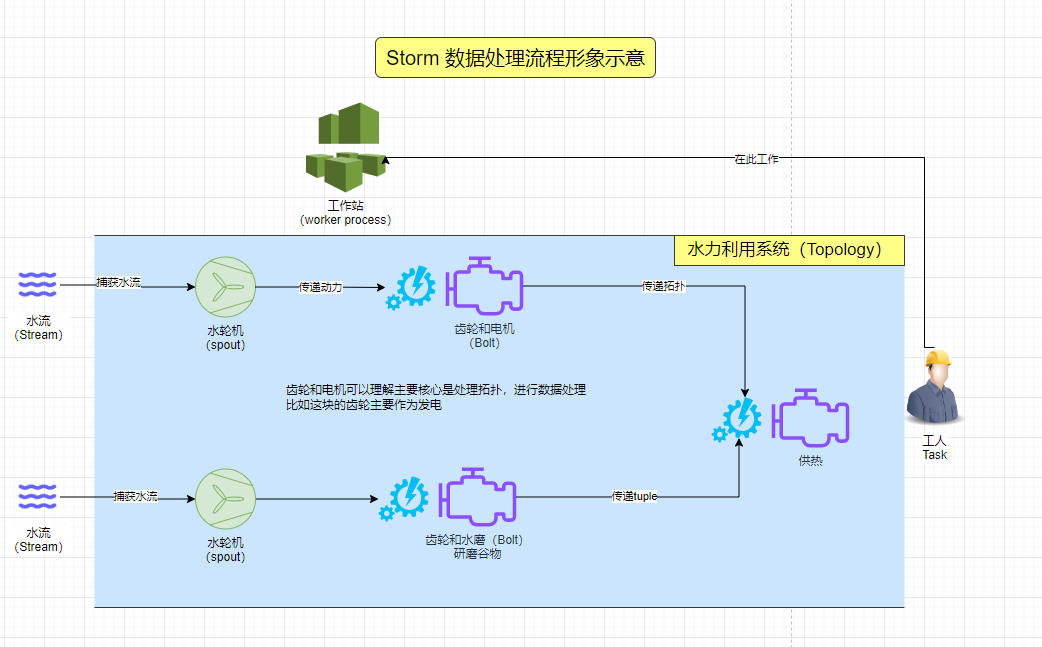
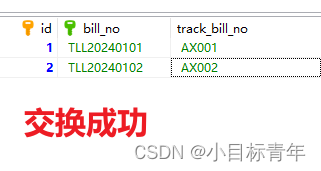





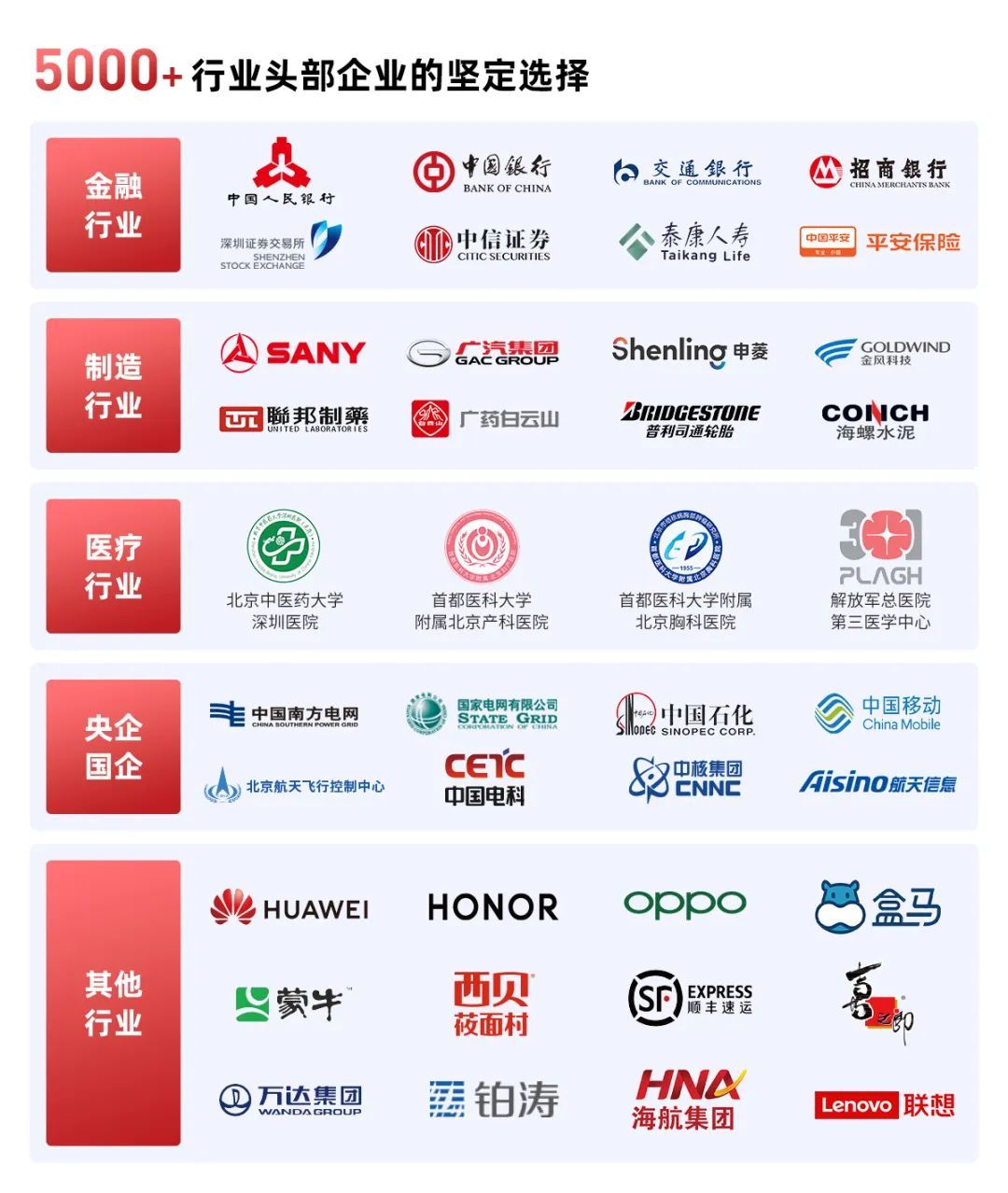

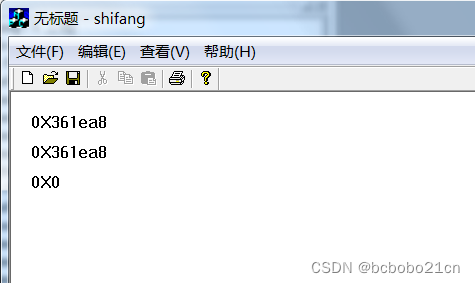

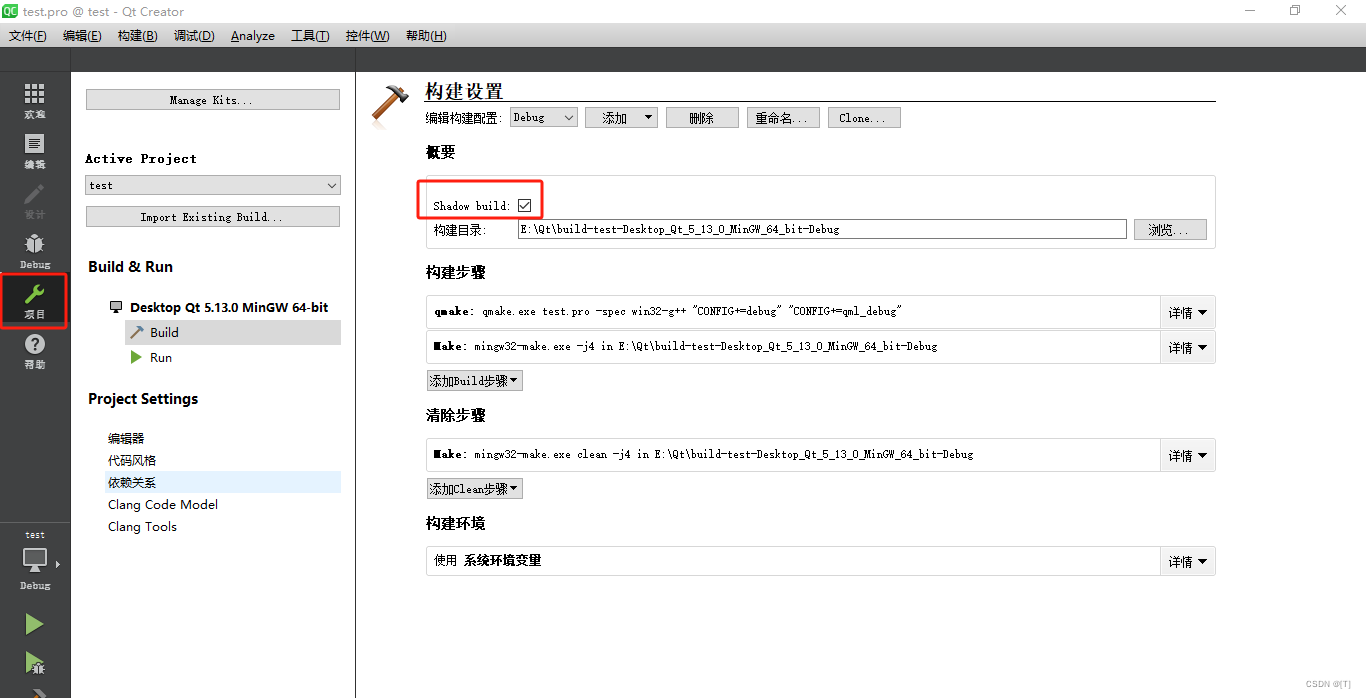


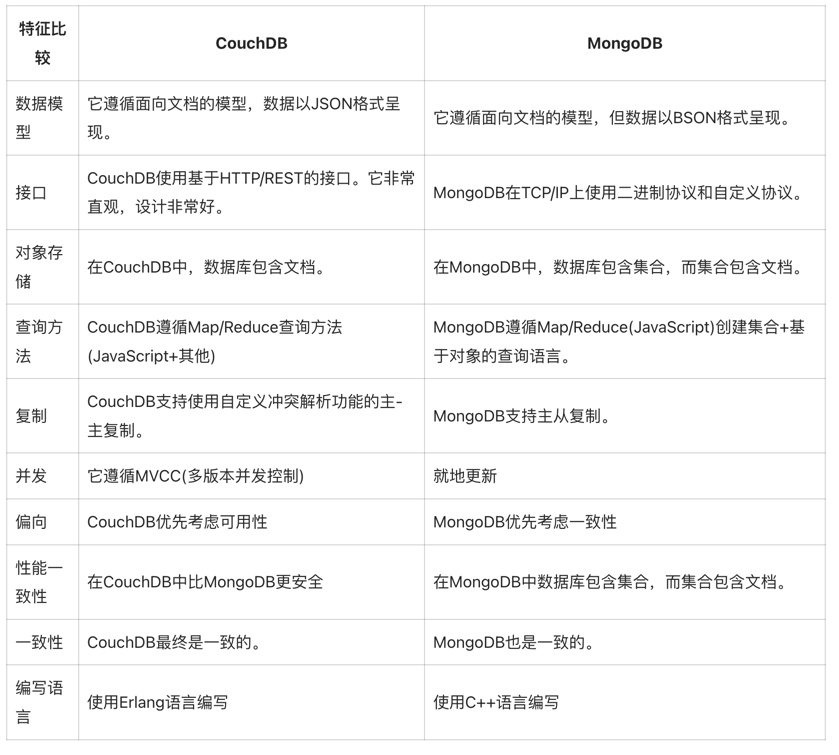

![解析为什么Go语言要使用[]rune而不是string来表示中文字符](https://img-blog.csdnimg.cn/direct/5ba1dc7462a34efcb87c304c41e3fe28.png)